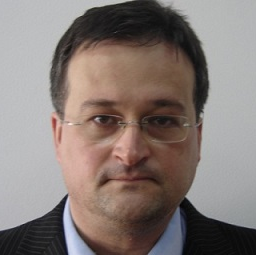Current Research on Dermatology: Pathology, Clinical Manifestation, Investigation and Therapy: 2nd Edition
A special issue of Life (ISSN 2075-1729). This special issue belongs to the section "Physiology and Pathology".
Deadline for manuscript submissions: 31 October 2024 | Viewed by 16780
Special Issue Editor
2. Saint Parascheva Clinical Hospital of Infectious Diseases, Head of the Dermatology Department, Galati, Romania
3. Multidisciplinary Integrative Center for Dermatological Interface Research
Interests: demodex; endosymbionts; cutaneous microbiome; integrative medicine; optical coherence tomography; dermoscopy; confocal microscopy; cutaneous comorbidities; skin cancer
Special Issues, Collections and Topics in MDPI journals
Special Issue Information
Dear Colleagues,
This second volume of this Special Issue follows on from the success of the first, we invite you to publish your research in this edition of “Current Research on Dermatology: Pathology, Clinical Manifestation, Investigation and Therapy” (https://www.mdpi.com/journal/life/special_issues/Dermatology_research).
Considering recent advances in the field, dermatovenerology has proven to be a specialty of clinical, investigative, and therapeutic interest. Medical history and clinical examination, followed by non-invasive imaging or blood tests or the exploration of skin structures and their pathological changes, allow pathologists to better understand, detect, and define diseases of the skin. Cutaneous signs and symptoms thus represent a window into the systemic state of the human body. Many diseases thought to be localized to the skin are now considered to be systemically involved in other areas. Each patient is unique, with their own comorbidities and anatomic or physiologic particularities. Cutaneous skin diseases vary in appearance, evolution, and prognosis as well as in their response to various treatments. The management of skin disease comorbidities requires interdisciplinary collaboration among medical and surgical specialties. Novel treatments are now available for various skin conditions, including surgical, cosmetic, and physiotherapeutic procedures. Drugs of both plant and chemical origin can produce systemic or adverse skin reactions. If classical therapy is ineffective or is not tolerated, off-the-label drugs or complementary and alternative medicine methods can be used as part of an integrative medicine treatment. The new perspectives offered by translational medicine and research on the microbiome, endosymbionts, inflammatory molecules, diagnostics, treatments, and observations of comorbidities, complications, and their management are improving the standard of skin care, placing it in the context of personalized medicine and care. This Special Issue of Life, entitled “Current Research on Dermatology: Pathology, Clinical Manifestation, Investigation and Therapy ”, will collect and present data on the latest developments in the field. We welcome reviews, research/original articles, case reports, and short review, clinical dermatology images (max: 175 words, 10 references, and 4 images). Articles should comprise roughly 3000 words and include more than 30 references. Review papers should be around 4000 words and include at least two figures or tables. Life has no restrictions on the maximum length of research manuscripts, provided that the text is concise and comprehensive. Papers may have two correspondent authors and two first authors. Submissions received before 24 June 2022 may receive a 20% discount.
Prof. Dr. Alin Laurentiu Tatu
Guest Editor
Manuscript Submission Information
Manuscripts should be submitted online at www.mdpi.com by registering and logging in to this website. Once you are registered, click here to go to the submission form. Manuscripts can be submitted until the deadline. All submissions that pass pre-check are peer-reviewed. Accepted papers will be published continuously in the journal (as soon as accepted) and will be listed together on the special issue website. Research articles, review articles as well as short communications are invited. For planned papers, a title and short abstract (about 100 words) can be sent to the Editorial Office for announcement on this website.
Submitted manuscripts should not have been published previously, nor be under consideration for publication elsewhere (except conference proceedings papers). All manuscripts are thoroughly refereed through a single-blind peer-review process. A guide for authors and other relevant information for submission of manuscripts is available on the Instructions for Authors page. Life is an international peer-reviewed open access monthly journal published by MDPI.
Please visit the Instructions for Authors page before submitting a manuscript. The Article Processing Charge (APC) for publication in this open access journal is 2600 CHF (Swiss Francs). Submitted papers should be well formatted and use good English. Authors may use MDPI's English editing service prior to publication or during author revisions.
Keywords
- demodex
- endosymbionts
- cutaneous microbiome
- integrative medicine
- optical coherence tomography
- dermoscopy
- confocal microscopy
- cutaneous comorbidities keyword
- inflammatory diseases
- hair
- skin cancer
- comorbidities
- skin surgery






